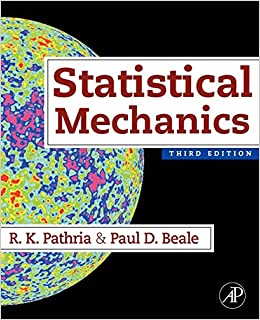Making use of expressions (12.3.17) through (12.3.19), (13.2.12), and (13.2.13), show that the expectation values of the
Question:
Making use of expressions (12.3.17) through (12.3.19), (13.2.12), and (13.2.13), show that the expectation values of the numbers \(N_{+}, N_{-}, N_{++}, N_{--}\), and \(N_{+-}\)in the case of an Ising chain are
\[
\begin{aligned}
\bar{N}_{ \pm} & =N \frac{P(\beta, B) \pm \sinh (\beta \mu B)}{2 P(\beta, B)} \\
\bar{N}_{++} & =\frac{N}{2 D(\beta, B)} e^{\beta \mu B}[P(\beta, B)+\sinh (\beta \mu B)] \\
\bar{N}_{--} & =\frac{N}{2 D(\beta, B)} e^{-\beta \mu B}[P(\beta, B)-\sinh (\beta \mu B)]
\end{aligned}
\]
and
\[
\bar{N}_{+-}=\frac{N}{D(\beta, B)} e^{-4 \beta J}
\]
where
\[
P(\beta, B)=\left\{e^{-4 \beta J}+\sinh ^{2}(\beta \mu B)\right\}^{1 / 2}
\]
and
\[
D(\beta, B)=P(\beta, B)[P(\beta, B)+\cosh (\beta \mu B)] .
\]
Check that (i) the preceding expressions satisfy the requirement that \(\bar{N}_{++}+\bar{N}_{--}+\bar{N}_{+-}=N\) and (ii) they agree with the quasichemical approximation (12.6.22), regardless of the value of \(B\).
Step by Step Answer:






